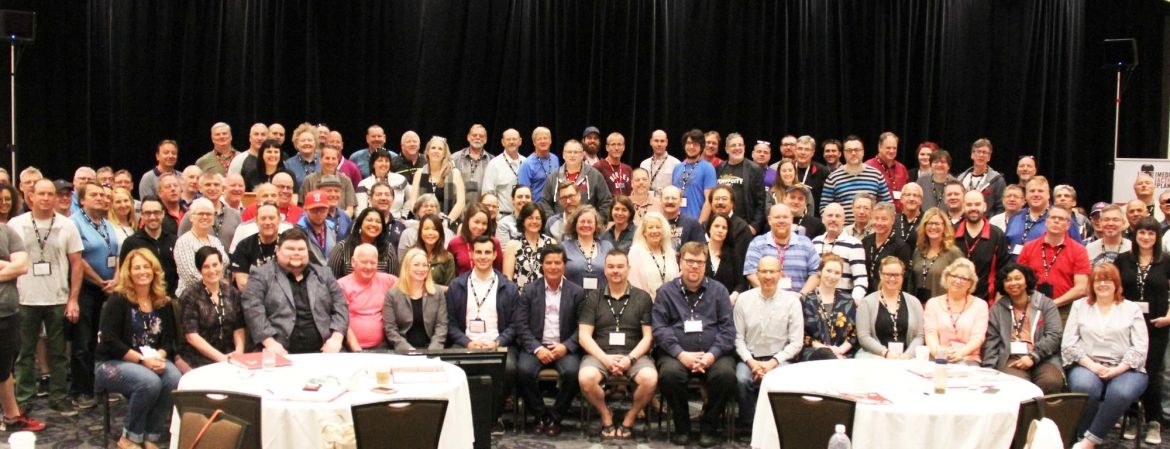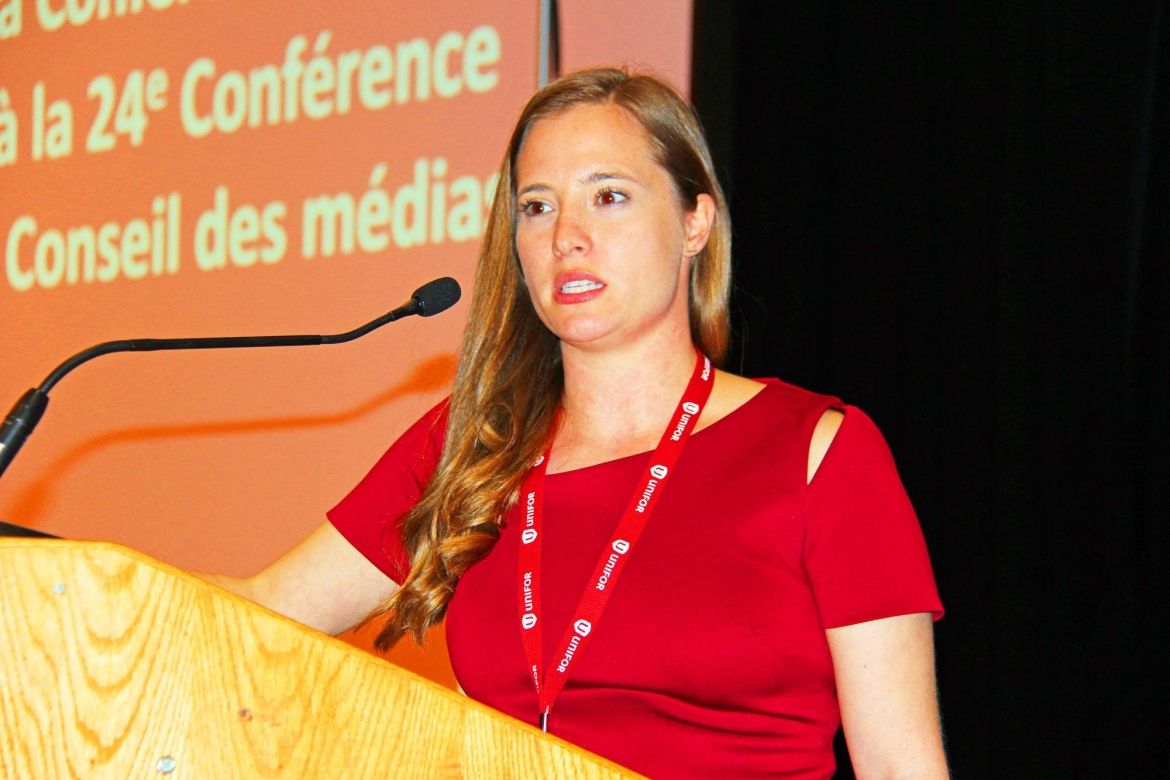
Share
A record number of delegates attended Unifor’s Media Council in Kelowna over the May 11-13 weekend, where discussions focused on harassment of media workers, the prevention of psychological injuries and the union’s Media Action Plan to save local news.
“Journalists are taking all sorts of abuse, from being called liars to facing vulgar verbal assaults on the job and it has to stop,” said Jerry Dias, National President in a speech to 118 delegates, from 24 media locals.
Heather Gillis, a member of Local 915M and NTV News reporter from St. John’s gave a keynote address about her experience after a man who verbally assaulted her with the vulgar and misogynistic phrase known as “FHRITP” was charged and acquitted.
“This has actually happened to me six or seven times. It’s humiliating and interrupts my ability to do by job, and without a conviction it just empowered more idiots to do this with impunity,” said Gillis.
In a new Unifor video on harassment screened at the conference, Gills appeared along with another media member Angelyn Francis who talked about online harassment. “It matters just as much what you do when you observe it as when it is being done to you,” said Francis, Local 87-M member and video producer at MacLeans Magazine.
The video sparked honest discussions on the prevalence of attacks on women in media and the opportunities for men and the union to address this issue.
Lisa Kelly, Director of the union’s national Women’s Department, made a presentation that provided context for workshops that followed. “Harassment in this sector isn’t new, but the #MeToo movement finally generated public attention, thanks to the brave women who have been sharing their painful truths,” said Kelly.
Workshops highlighted the role the union and workplace representatives have to ensure employers meet obligations established in both human rights and health and safety legislation to make all workplaces free of harassment. Delegates at the council also explored what witnesses and targets can do to intervene, de-escalate and prevent sexual and gender harassment of media workers.
Worldwide, one half of women who work in the media sector have reported e sexual harassment, according to the International Federation of Journalists.
Another guest speaker, Matthew Pearson an Ottawa Citizen reporter who won a Mitchener fellowship to study the effects of covering traumatic events on journalists, raised concerns about employers and journalism schools failing to address another health and safety issue under the Labour Code.
“Journalism schools and employers have not taken their duty of care seriously and we have to do more to teach media workers self-care, because they often suffer from vicarious trauma and can get very sick without even realising it is work-related,” said Pearson.
Several delegates shared personal stories of covering horrific events, having nightmares and psychological symptoms afterward, without any employer supported debriefing or counseling. Exposure to vicarious trauma, from bearing witness to fear, pain, shame, and terror that trauma survivors have endured, has resulted in a growing number of media workers being diagnosed with post-traumatic stress disorder said Pearson.
The annual conference wrapped up with a series of discussions and a commitment to Unifor’s Media Action Plan to advocate and lobby to save local news. Canadian newsrooms have shrunk by at least 30 per cent in the last four years, with more newspaper closures and journalist layoffs expected to come. Solutions are needed now by governments and the union and delegates agreed that the preservation of journalism is fundamental to democracy in Canada.




